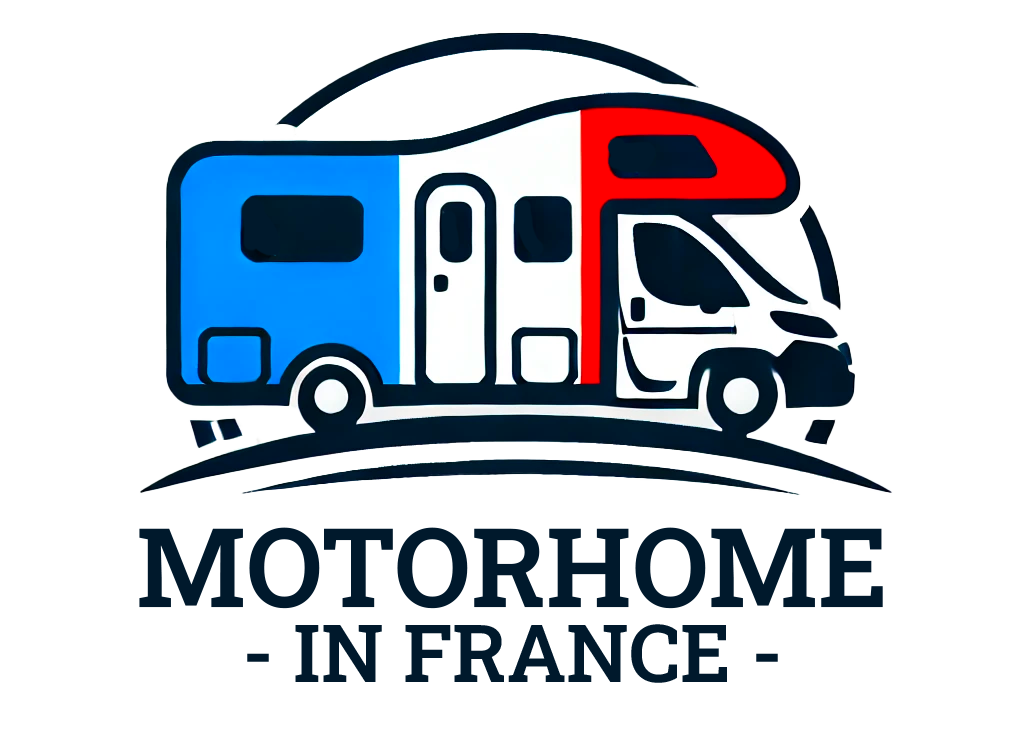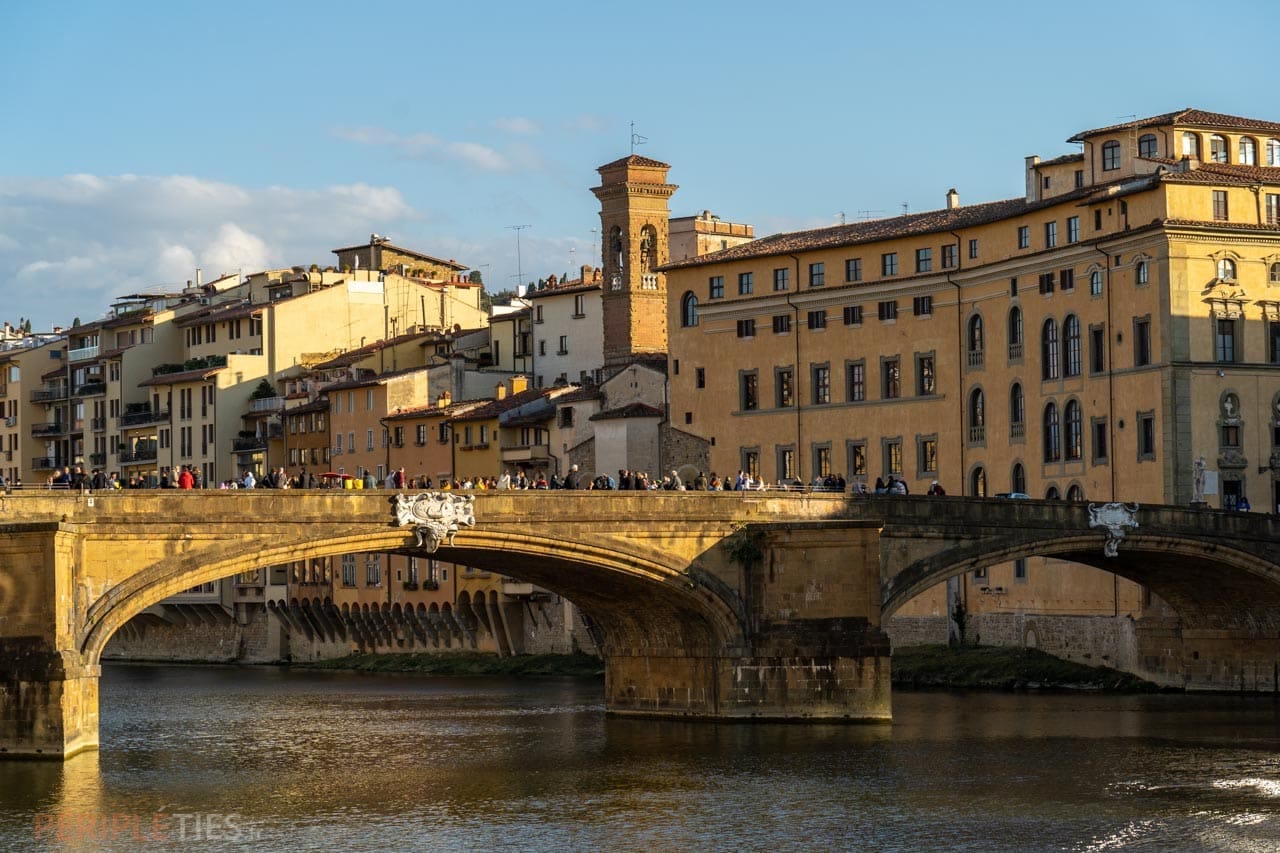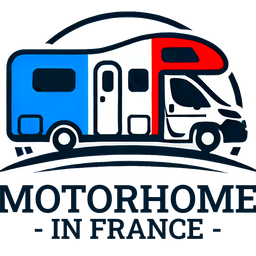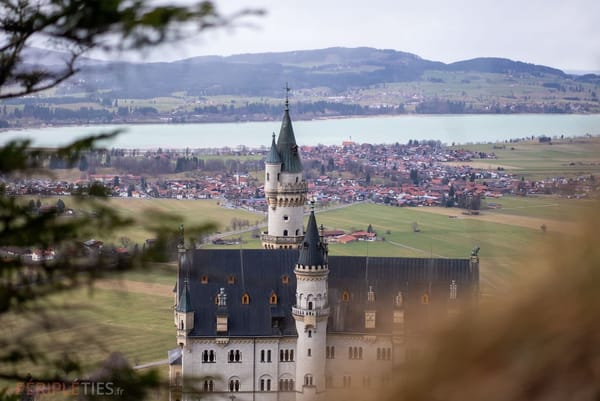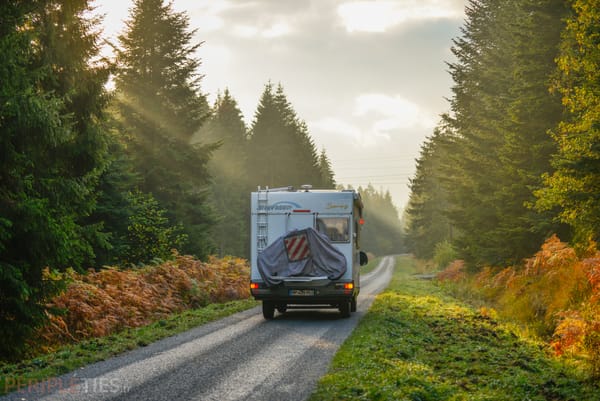Who hasn't dreamt of living the Dolce Vita aboard their motorhome or van? But is it an easy adventure to undertake?
You'll learn nothing if we tell you that Italy is a popular tourist destination, and that you certainly won't be the first to embark on a trip to the Azzurri.
Our advice for visiting Italy by motorhome or van
We're not here to give you advice, but we can answer the most frequently asked questions about road trip ideas in Italy by motorhome, traffic rules, regulations and parking options, to help you make the most of your road trip!
Follow the guide and don't hesitate to consult some of our articles and detailed itineraries by clicking on the links.
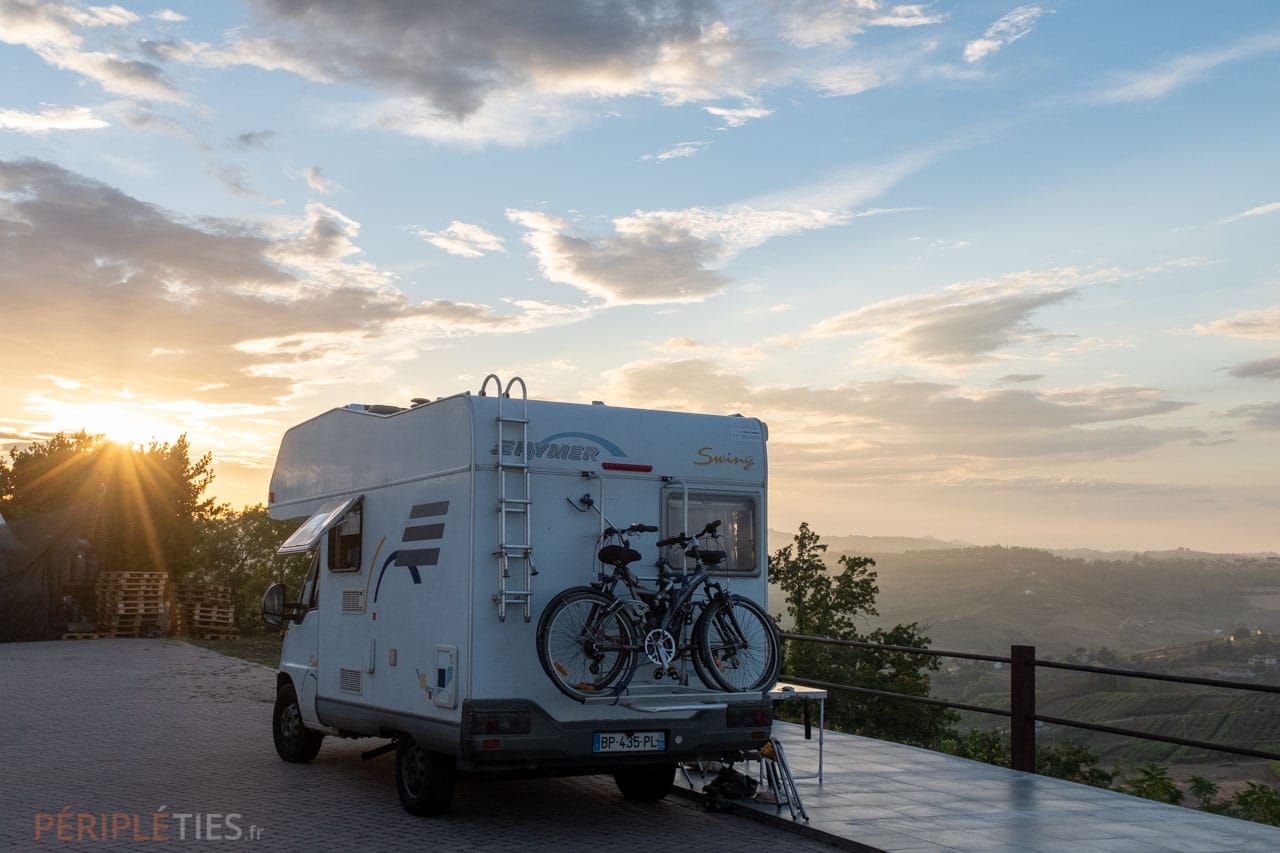
Is wild camping permitted in Italy?
In Italy, wild camping is forbidden in most regions, particularly in high-tourism areas such as Sardinia and the Province of Bolzano (Alto Adige, South Tyrol), Lake Garda, protected areas, coastlines and national parks. In practice, this applies to many regions by Italy.
Camping in Italy: what are the regulations?
In Italy, there are two distinct situations in terms of the Highway Code for parking motorhomes. If there are no external devices deployed, the vehicle is treated like any other, allowing you to sleep inside (unless explicitly stated otherwise).
On the other hand, when the vehicle is in camping mode, with features deployed such as open windows, deployed blinds, unfolded footboards, chairs outside, these activities are generally not permitted in a standard car park. It is also essential not to encroach on road markings.
In practice, unjustified penalties are sometimes imposed by certain municipalities. Regulations vary from region to region. Some provinces, such as Sardinia, Veneto and Emilia Romagna, tend to regard sleeping outside the campsite as camping in the wild.
Signs prohibiting overnight parking for vehicles with equipment are generally clearly visible. Fines for failure to comply with these rules apparently range from €10 to €500 in the event of a police check.
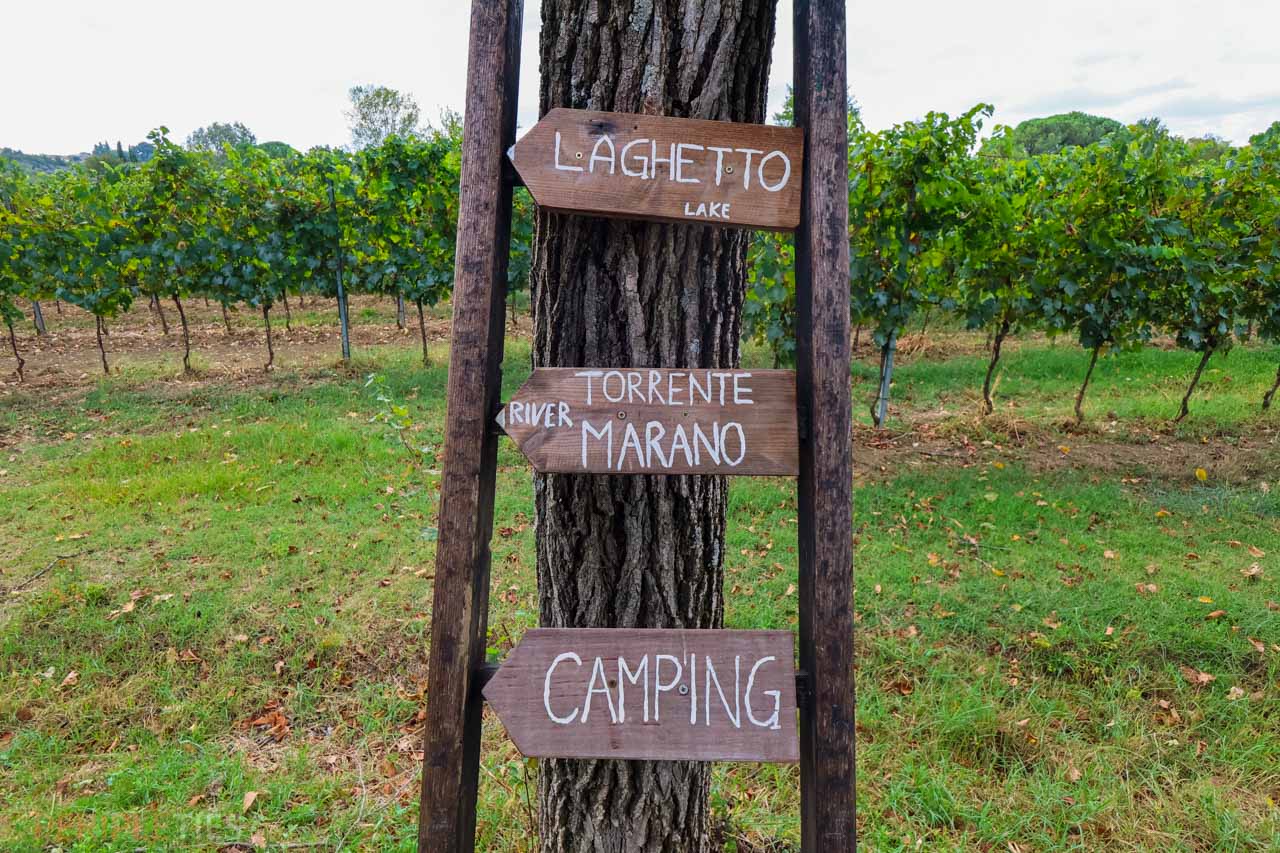
Where can you sleep in a motorhome in Italy?
If you prefer self-parking, there is much greater tolerance outside tourist areas, in less touristy regions, during the low season, provided you behave discreetly and impeccably (as you would anywhere else, we might say...).
However, it is essential to find places that are not private. To be honest, it's not very easy to find nice, quiet places to park your motorhome for free in Italy. In many regions, this is often limited to roadsides, car parks or next to cemeteries!
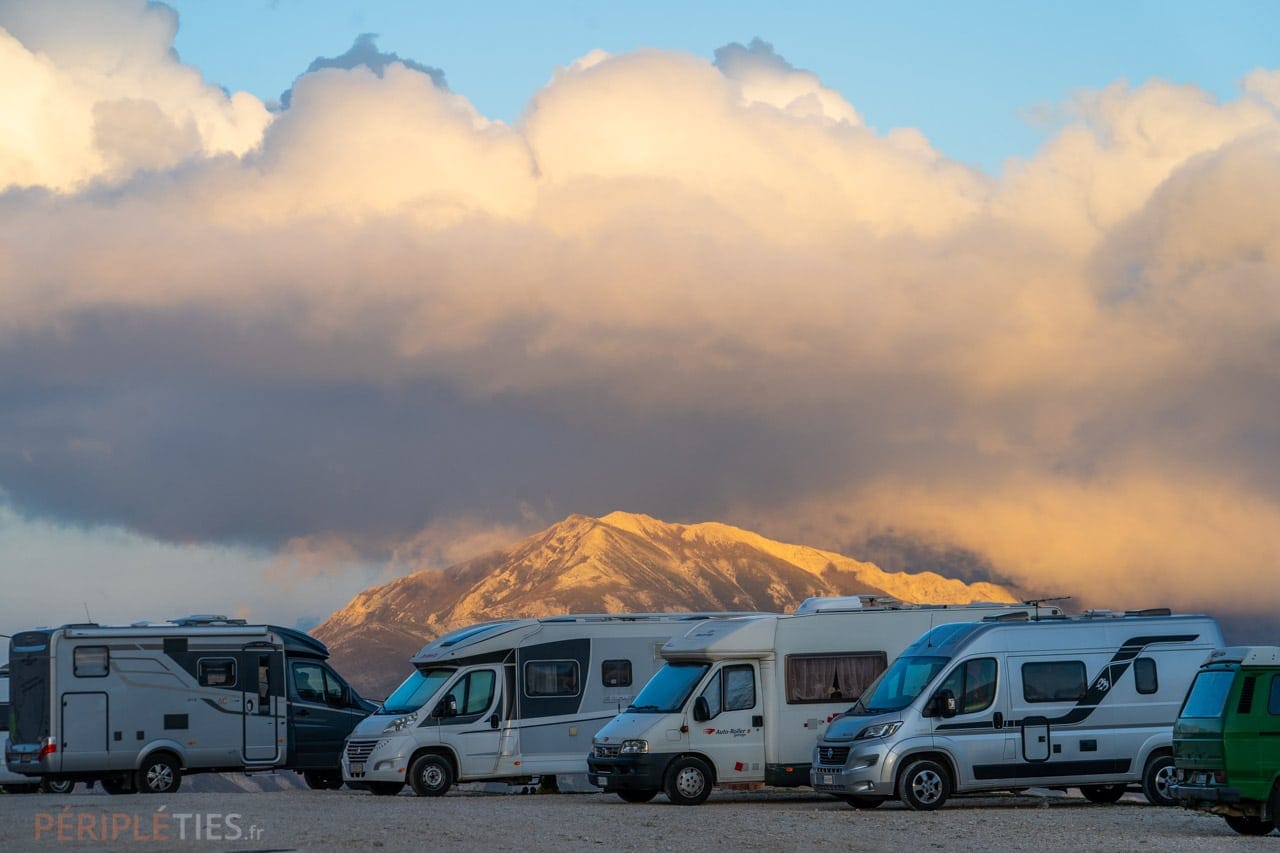
3 ways to find motorhome pitches in Italy
In short, Italy may not be a ‘wild camping’ paradise, but don't lose hope, because there are alternatives for finding places to spend the night in a motorhome in Italy.
You can use mobile applications specifically for motorhomes that list parking areas, campsites in Italy, as well as free and paid parking areas.
1) Use the Camping-car Park, Park4night and Campercontact apps
Some of the most popular applications include Campercontact, Park4night and Camping-car Park, which allow you to search for parking areas, check prices, access detailed information about each pitch and read other users' reviews.
2) Camping with local people in Italy
CampSpace is another good option for finding pitches in private homes.
You can take advantage of a 5% discount on your first stay with our CampSpace promotional code: PERIPLETIES2023.
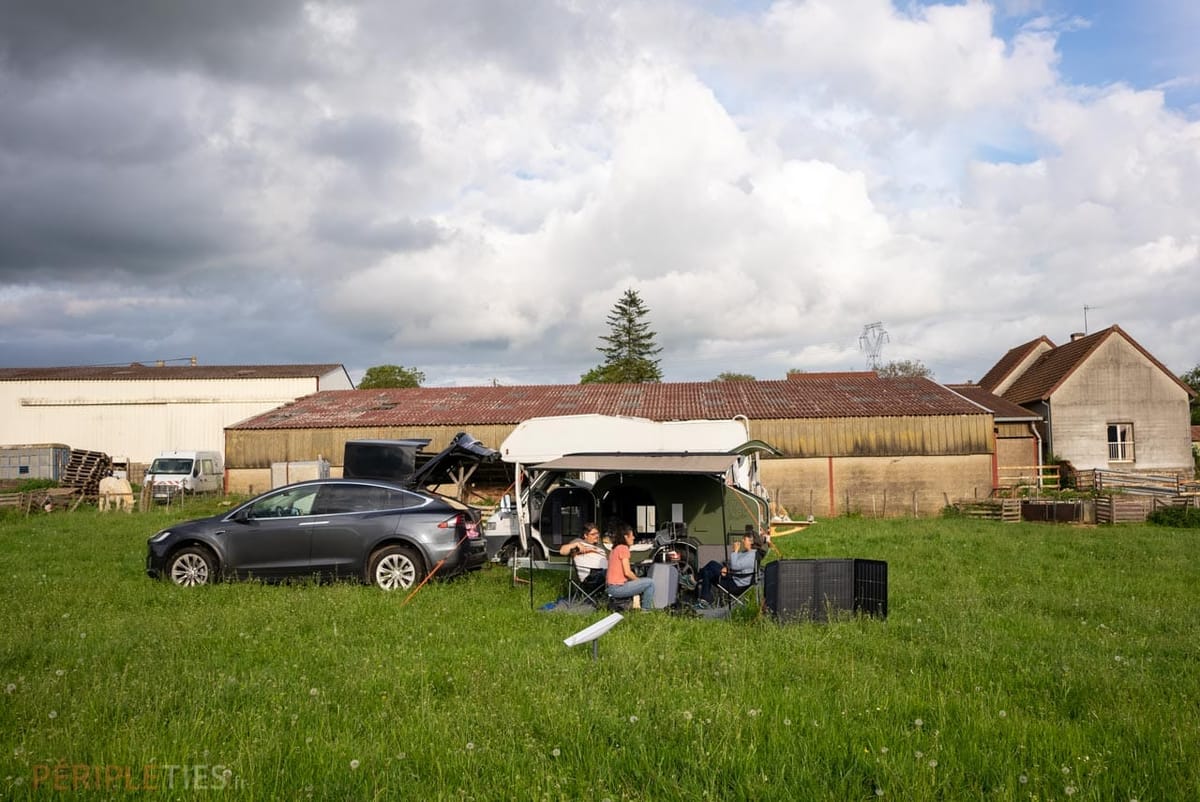
3) Agritourism in Italy: the best option for us!
In the same spirit, we've tested the Agricamper Italia application on several occasions during our trips to Italy by motorhome.
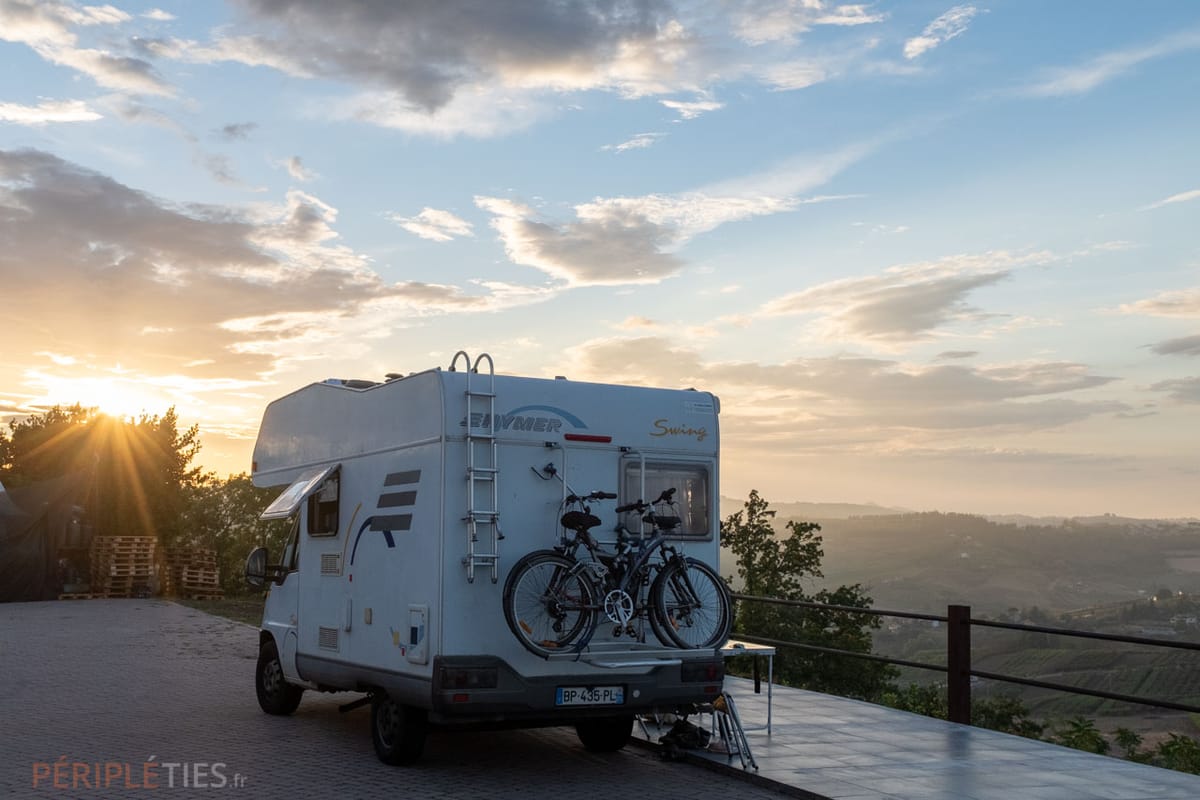
Like France Passion, our favourite network in France, it allows you to park for free for a year in tourist farms (agritourismo in Italian) and producers' inns.
The only condition is that you join the network, and we'll tell you more about it in a dedicated article.
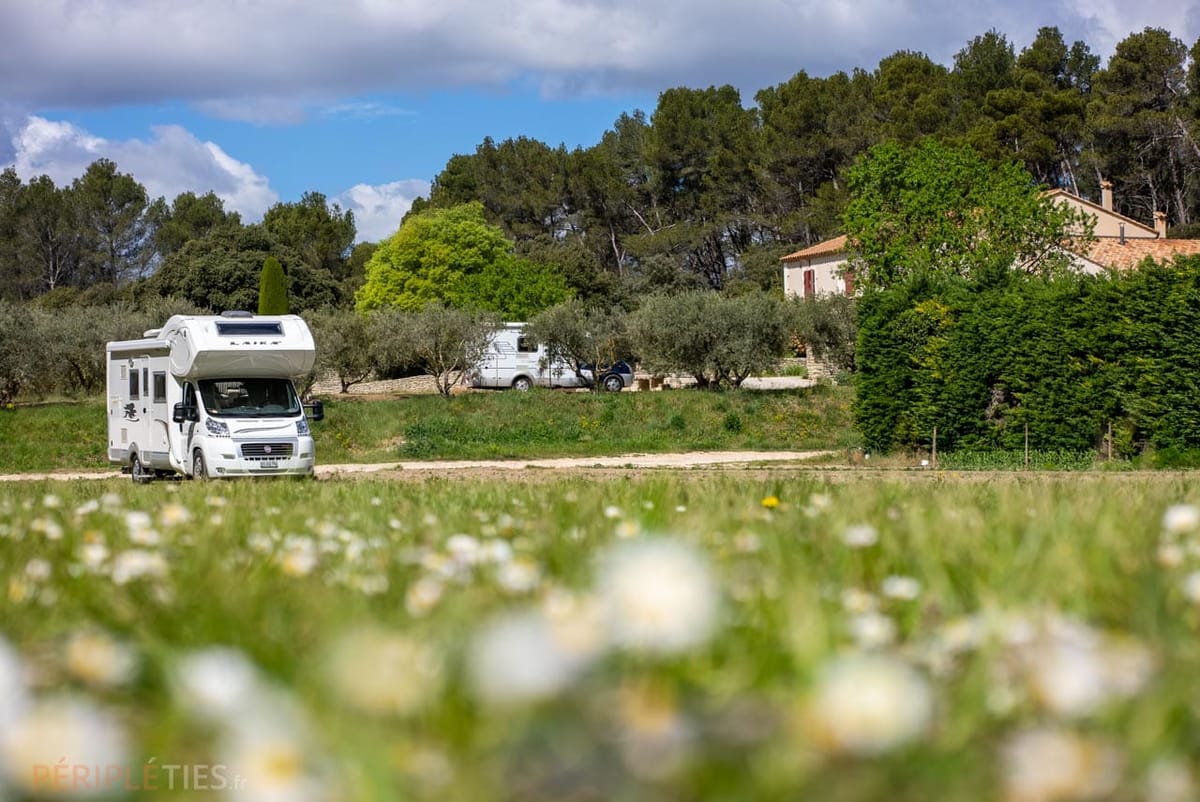
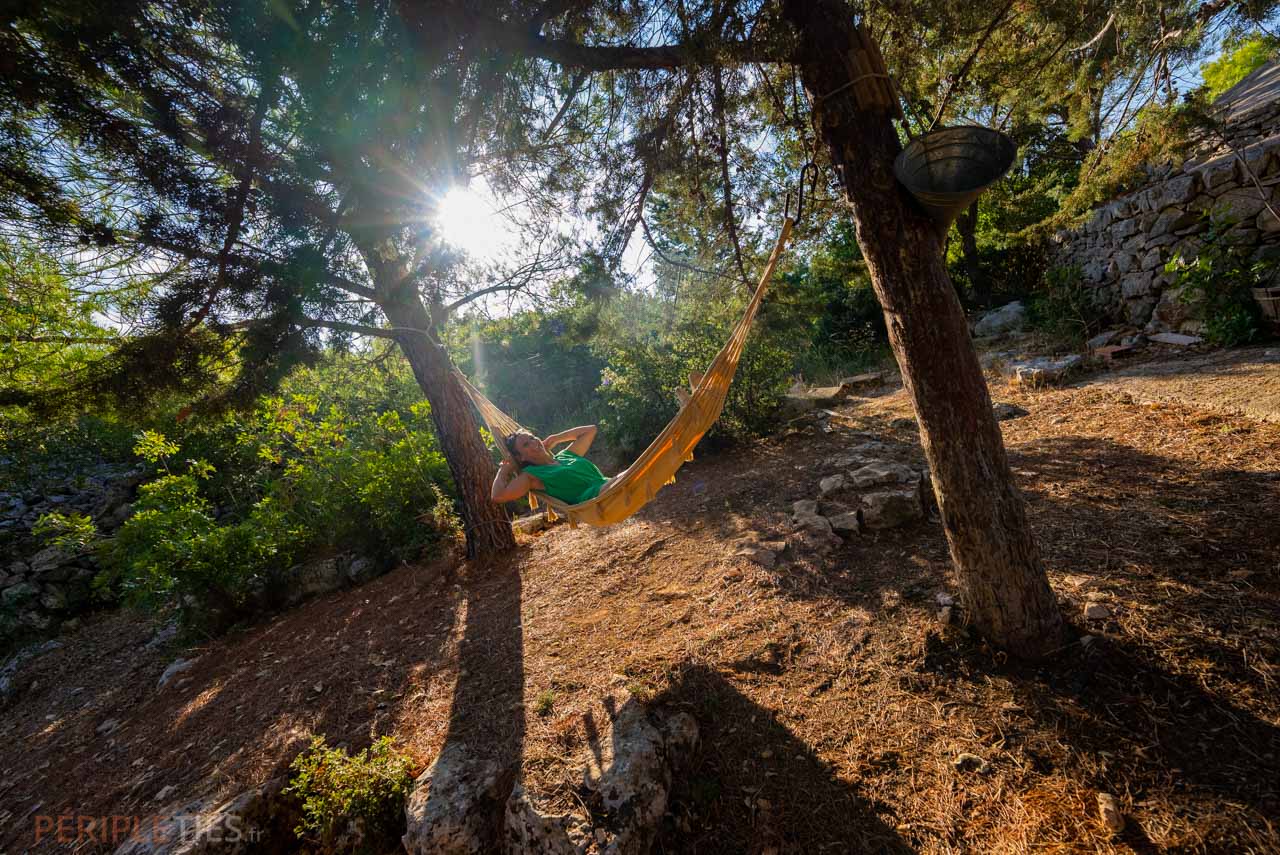
Free and pay campsites in Italy
When travelling by motorhome in Italy, there are a number of free parking areas, particularly in rural and less touristy areas.
How much does a service and parking area in Italy cost?
Paid parking areas, commonly known as ‘Sosta Camper’, are more widespread. Rates vary, but on average you can expect to pay between €15 and €20 per night (but this can rise to €30 or even €35 in tourist areas such as Alto Adige).
How much does camping in Italy cost?
The cost of camping in Italy varies considerably depending on the location, the season and the facilities available. Camp-site prices in Italy can vary between €40 and €70 per night. Or even more.
Campsites in popular tourist areas, particularly by the sea, tend to be even more expensive.
Unfortunately, Italy is ranked as the third most expensive country in Europe for camping, just after Switzerland and Croatia (according to ADAC statistics for 2022).
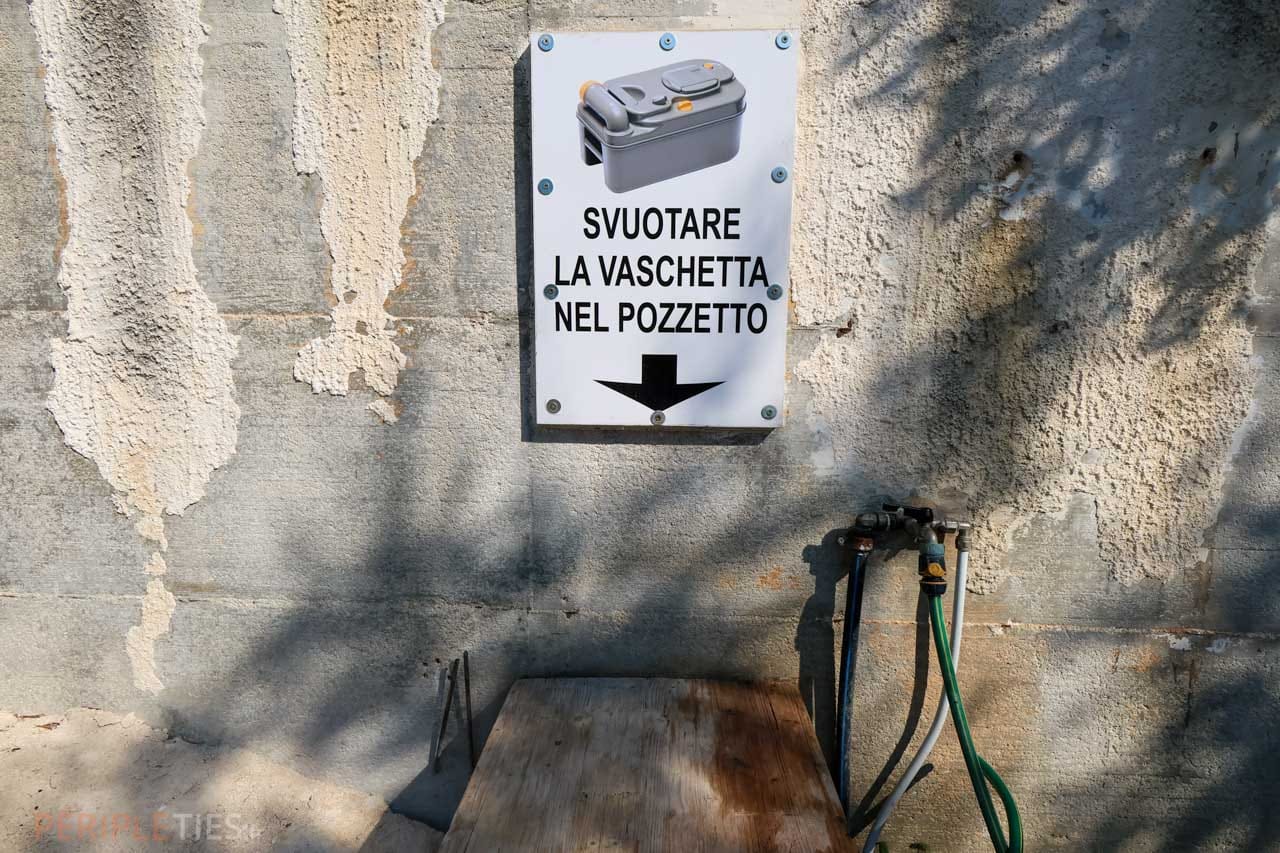
Motorhome safety in Italy: our opinion
Italy is a safe country for tourists in general, and many motorhome travellers enjoy trouble-free holidays. However, in recent years there have been reports of theft from car parks.
It is advisable to take a few security precautions and follow some basic principles. Never leave valuables in plain sight inside your vehicle, and park in well-lit and supervised areas when you leave your vehicle.
Is it easy to travel by motorhome in Italy?
On the whole, motorhoming in Italy is perfectly feasible. Italy has a good road network, but it can vary in quality from one region to another (particularly between the north and south).
Motorways (autostrade) are generally in excellent condition, but mountain and country roads can be narrow and/or winding.
The major urban centres are virtually impassable, but don't worry, there's always a solution!
Oh, and don't forget: Italians drive fast! Be aware of this and allow yourself to be overtaken.
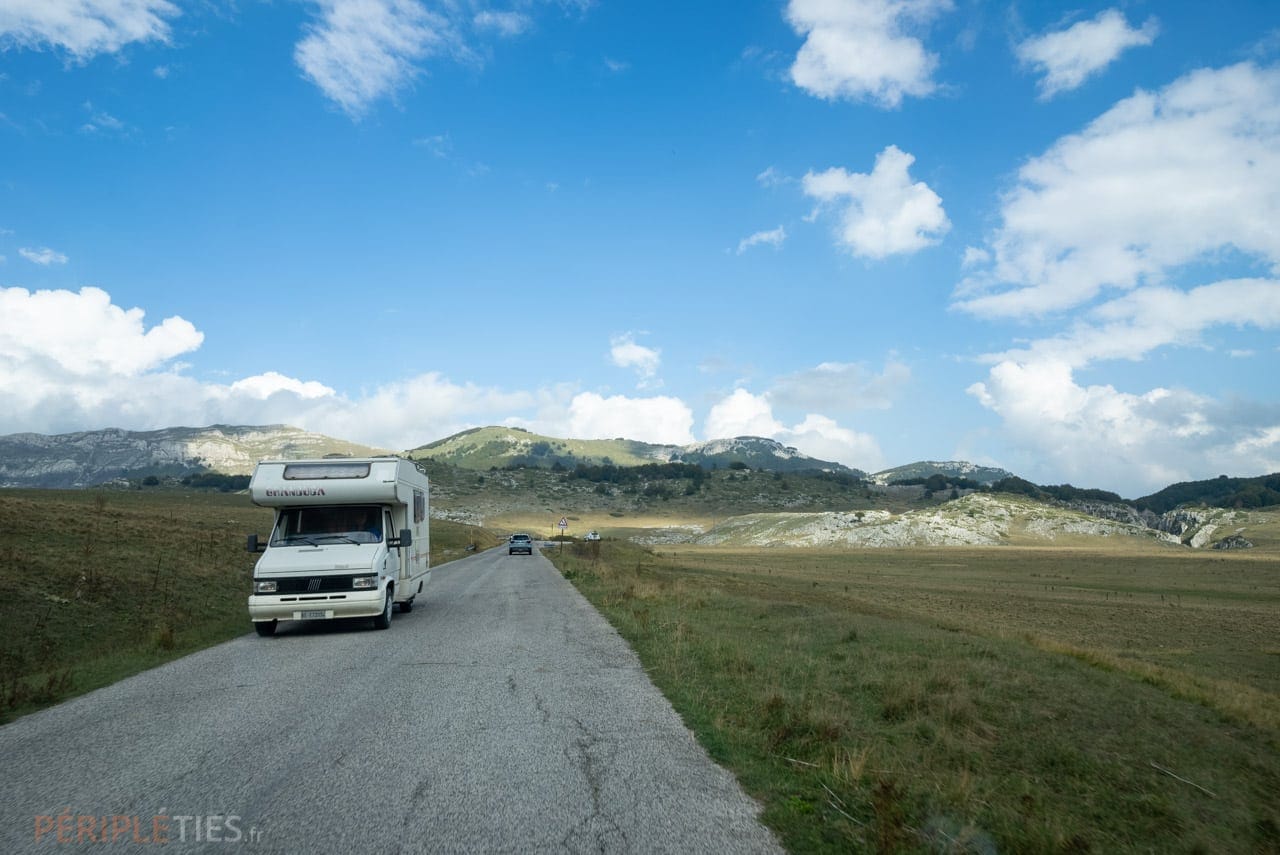
A good motorhome GPS for a trip by Italy
In short, nothing insurmountable, but be prepared to drive on mountain roads if you're visiting regions like the Dolomites, the Italian Alps or Abruzzo by motorhome.
Make sure you have a good GPS, especially if you have a large motorhome, as this will help you avoid railway bridges or roads that are too narrow.
Or check out our article on free GPS applications.
Is it better to travel by van in Italy?
The narrow, winding roads in some parts of Italy can make driving difficult, which certainly makes travelling by van in Italy easier to navigate, park and turn around. But again, nothing insurmountable if you know your vehicle, its limits and your own.
It's best to steer clear of hilltop villages, for example, and opt for car parks on the outskirts, then walk to the centre.
Speed limits in Italy
The speed limits for motorhomes in Italy are as follows, unless otherwise indicated on road signs.
- In urban areas for vehicles weighing less than 3.5 tonnes: 50 km/h
- Outside urban areas (trunk roads): 90 km/h (80 km/h for vehicles over 3.5 tonnes)
- On motorways for vehicles under 3.5 tonnes: 130 km/h (100 km/h for vehicles over 3.5 tonnes).
For caravans, the speed limit is 70 km/h on roads outside built-up areas and 80 km/h on motorways.
Traffic restrictions in major cities
Italy, like many other European countries, has introduced traffic restrictions in certain major cities to combat greenhouse gas emissions and improve air quality.
Limited traffic zones (Zona traffico limitato, ZTL) have been introduced in the main urban centres, including Milan, Rome, Turin and Florence, as well as in certain historic centres. Number plates are scanned automatically when entering these zones.
These restrictions may change, so it is advisable to check the latest information on traffic perimeters.
Where can I park my motorhome in Italy?
As a general rule, given the dense traffic in Italian cities and the often narrow streets, it's best to look for secure car parks outside the major cities.
You can then walk, cycle or use public transport to reach the city centre, depending on the distance.
You'll find plenty of parking options on the best motorhome apps, such as Park4night, or via Google Maps.
Watch out for parking charges!
Consult other motorhome owners' reviews for information on parking options and charges.
Private operators will direct you to their motorhome car parks (even though they are supervised), charging up to three times the rate of public car parks. They may sometimes require you to pay the full day's price, even if you only plan to stay for an hour or two. Often, these payments have to be made in cash, without the option of giving change.
Although not systematic, this practice seems to be fairly common in the south of Italy, which can be a source of frustration. So it's essential to find out before you park.
Motorways and tolls in Italy
In Italy, tolls are charged on most motorways, but they vary according to distance, type of vehicle and motorway used.
Motorhomes generally pay higher rates (Class 2 or 3 depending on height) than cars, although tolls in Italy are generally cheaper than in France.
For example, on our north-south motorhome tour of Italy to Puglia, we paid around €60 for motorways in total.
European electronic toll badges valid in Italy
Several European countries have introduced national electronic toll systems and have worked on interoperability with other countries.
This is particularly true of the Bip & Go electronic toll tag that we use on our motorhome journeys in Italy. All you have to do is affix the badge to your windscreen, and there's no need to pay every time you leave the motorway.
It's quick and easy, with a single monthly deduction from your bank account. It costs an extra €2.50 per month to use this service.
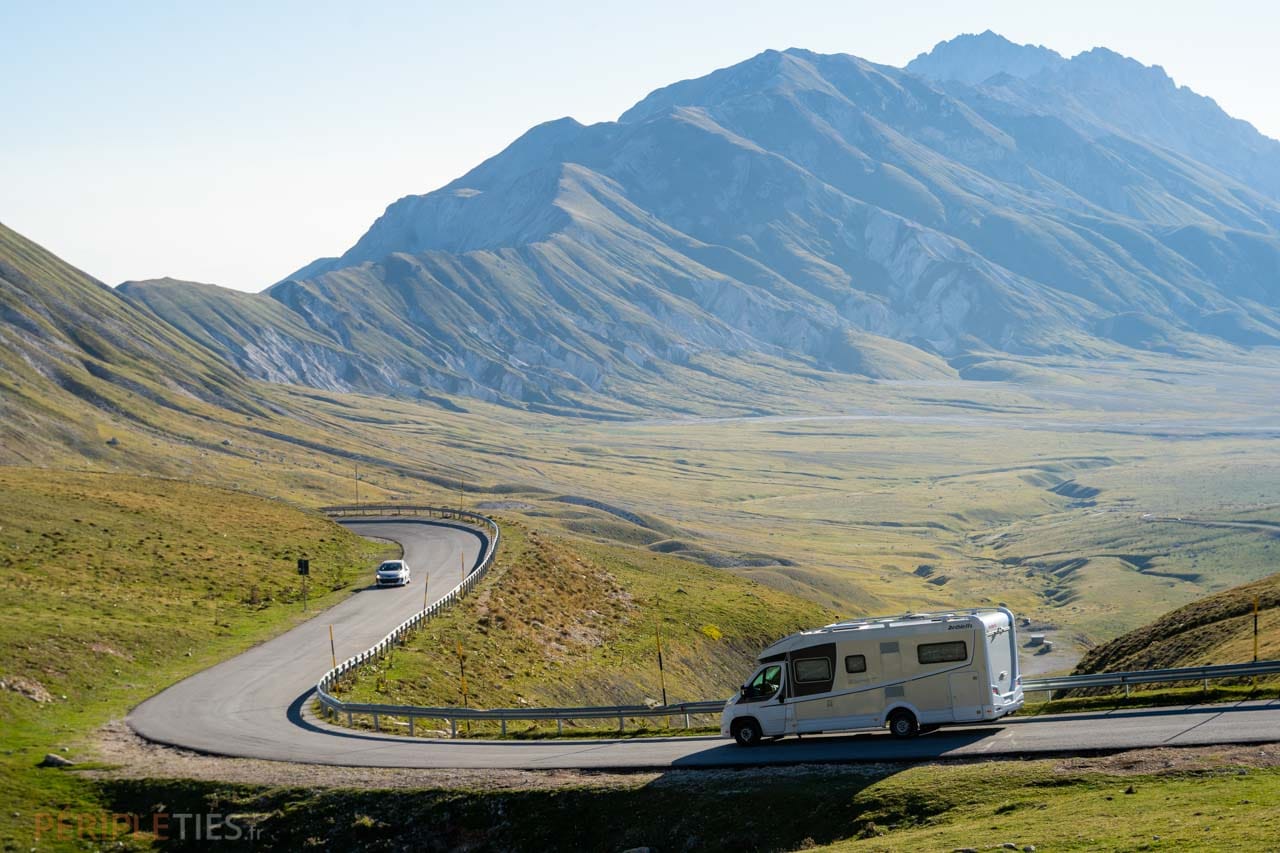
Other traffic rules in Italy
As in many european countries, you'll need to carry a warning triangle, a safety jacket for the driver and passengers, and a spare wheel (or tyre repair kit).
The essential kit for your safety on the roads!
Low beam is compulsory
During the day, dipped headlights must be switched on outside built-up areas and in tunnels.
Snow chains or winter tyres are compulsory if conditions require. Road signs indicate that winter tyres are compulsory at certain times of the year.
Loading motorhomes in Italy
In Italy, to comply with the highway code, the loading rules for motorhomes are as follows:
- The load must not exceed the front or width of the motorhome.
- At the rear, the load may not exceed 30% of the total length of the motorhome or trailer, including the length of the tow bar.
- Equipment such as bicycle racks and additional luggage compartments extending beyond the rear must be fitted with a reflective plate.
- At night, overhanging loads must be fitted with a red light.
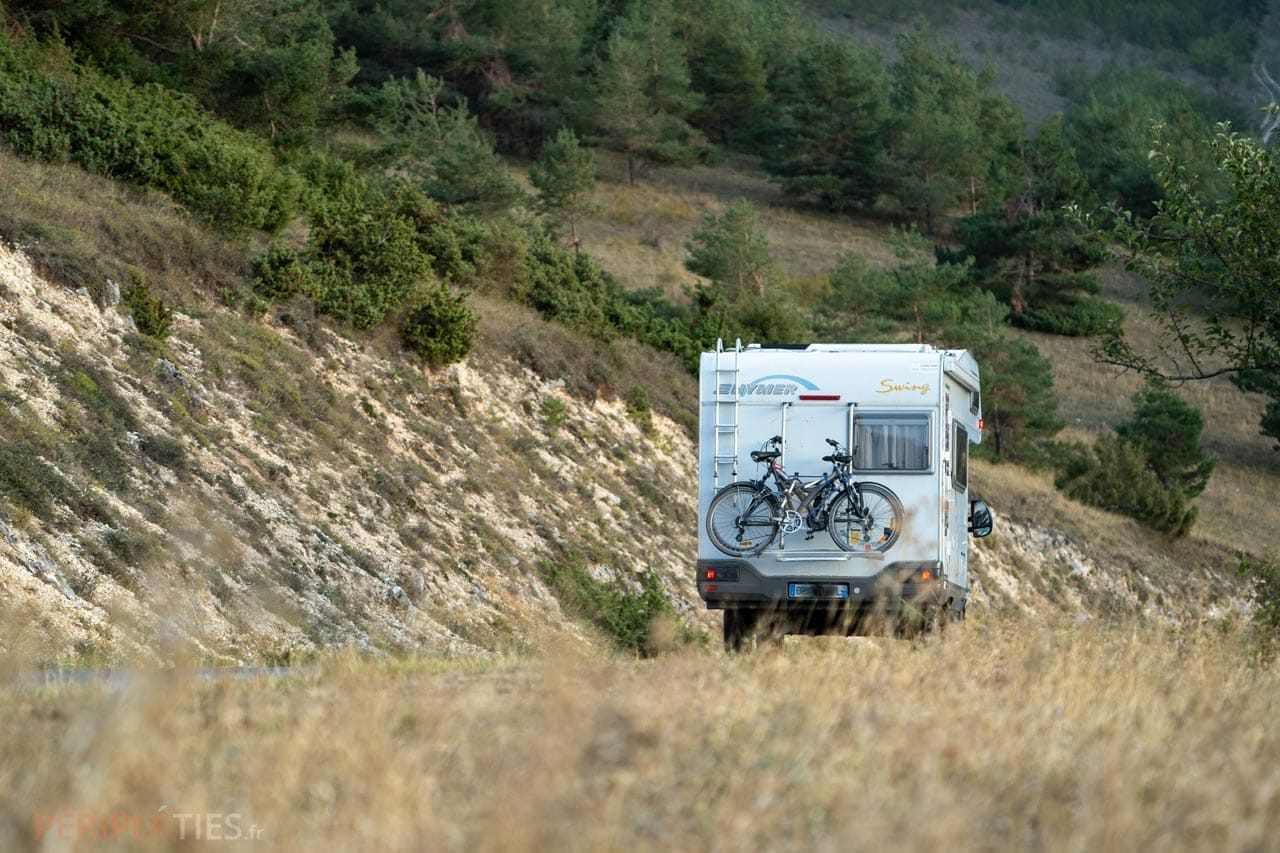
What itinerary should you follow in Italy by motorhome?
You have as many choices as there are regions... but some are naturally better suited to motorhome roadtrips than others.
We think that some provinces are better suited to vans or small motorhomes.
Otherwise, the use of bicycles or motorbikes is essential for a motorhome trip in Italy.
6 road-trip ideas in Northern Italy
There are many options for motorhome tours in Northern Italy, either in several stages or combined.
1) Discover Piedmont and the Aosta Valley
In Northern Italy, you could consider a trip to the Italian Alps, exploring Piedmont and the Valle d'Aosta.
2) Explore the Italian lakes region
The Italian Lake District, north of Milan, is famous for its mountains reflected in the magnificent bodies of water in Lombardy. Must-see lakes include Lake Como, Lake Varese, Lake Orta and the famous Lake Garda.
Be sure to book campsites or plan stops at motorhome parking areas, as Lake Garda, for example, is a popular tourist destination.
3) An unforgettable itinerary in the Dolomites
A road-trip in the Dolomites, from Bolzano to South Tyrol via the Valle di Funes, Cortina d'Ampezzo, the Tre Cime di Lavaredo and the Fanes-Sennes-Braies Nature Park, will immerse you in the exceptional beauty of these mountains, picturesque villages and Alpine culture. Bear in mind, however, that this is a very popular region.
4) Discover the Cinque Terre in Italy
You can also start along the Italian Riviera, from Genoa to the promontory of Portofino, towards the Cinque Terre, a collection of five picturesque coastal villages. However, it's important to note that the roads here are very narrow, which can make travelling by motorhome more difficult.
5) Driving through Emilia-Romagna
If you'd rather head east than visit Tuscany, driving through the Emilia-Romagna region, from Piacenza to Rimini, offers the chance to visit cities such as Parma, Modena and Bologna, while discovering the best of Italian gastronomy.
6) A trip to Tuscany
If you opt for Tuscany, you can explore the picturesque countryside and visit towns such as Siena, San Gimignano and beautiful Florence.
Visiting Florence in a motorhome
To visit Florence by motorhome, the Parcheggio Villa Costanza, located to the west of Florence, allows you to park your motorhome and take the T1 tram to the city centre in 20 minutes, for a fee of 15 euros per day.
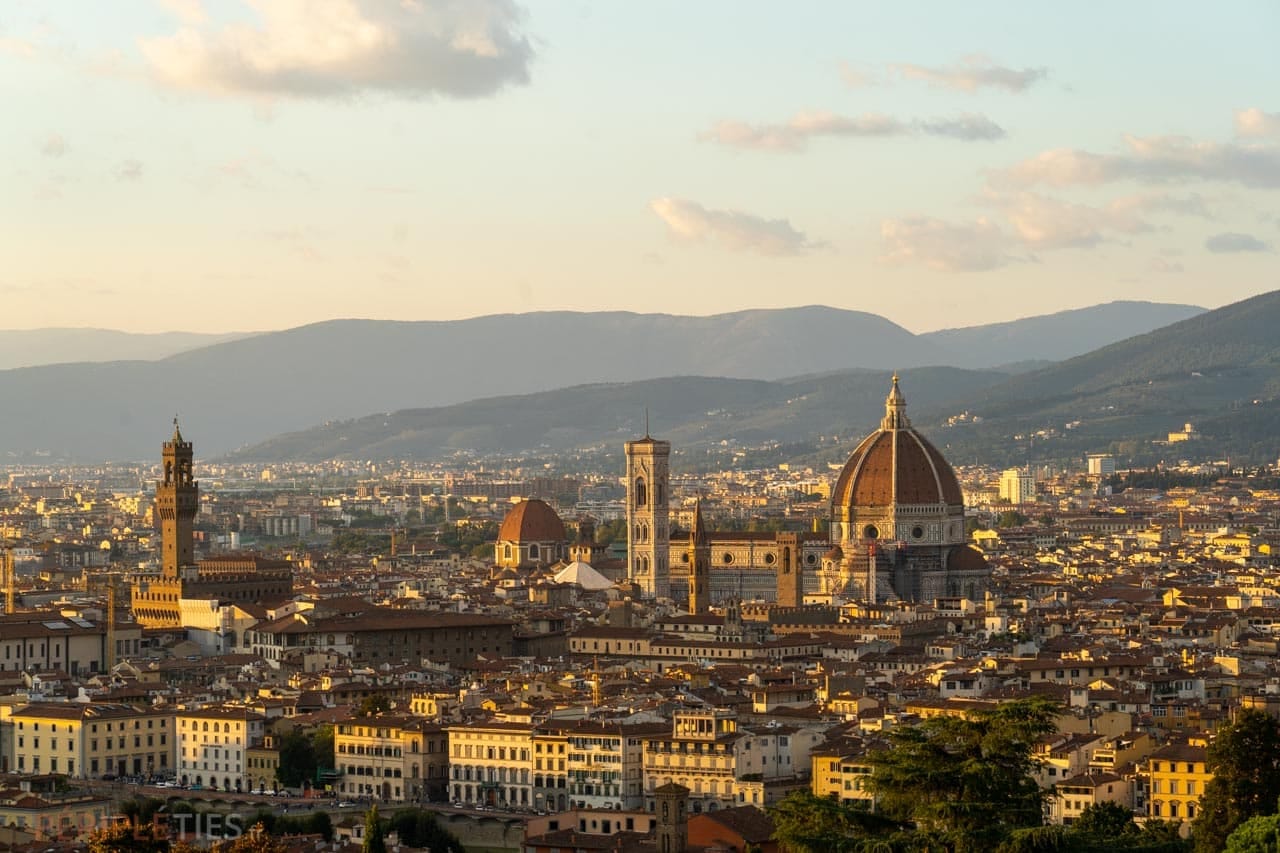
4 motorhome itineraries in Southern Italy
The south of Italy is still steeped in tradition. It is less urbanised than the north, which is more modern and industrialised. The city of Rome marks the transition between these two parts of the country. If you have the opportunity to visit the capital, we recommend it.
1) Discovering Abruzzo by motorhome
On our first road trip by Italy, we explored Abruzzo and Molise by motorhome. Abruzzo is a lesser-known destination, historically linked to Puglia thanks to transhumance, and offers a wealth of natural treasures.
2) A road trip in Puglia
Leave Pescara and head for Santa Maria di Leuca, passing through the towns of Alberobello, Locorotondo, Ostuni and Otranto. The Apulia region, the heel of the Italian boot on the Adriatic and Ionian coasts, is also very popular, especially in summer, and boasts treasures of Baroque architecture and a breathtaking coastline with caves and white cliffs rising out of a sea of unparalleled blue!
You can also visit Matera, famous for its troglodyte houses in neighbouring Basilicata.
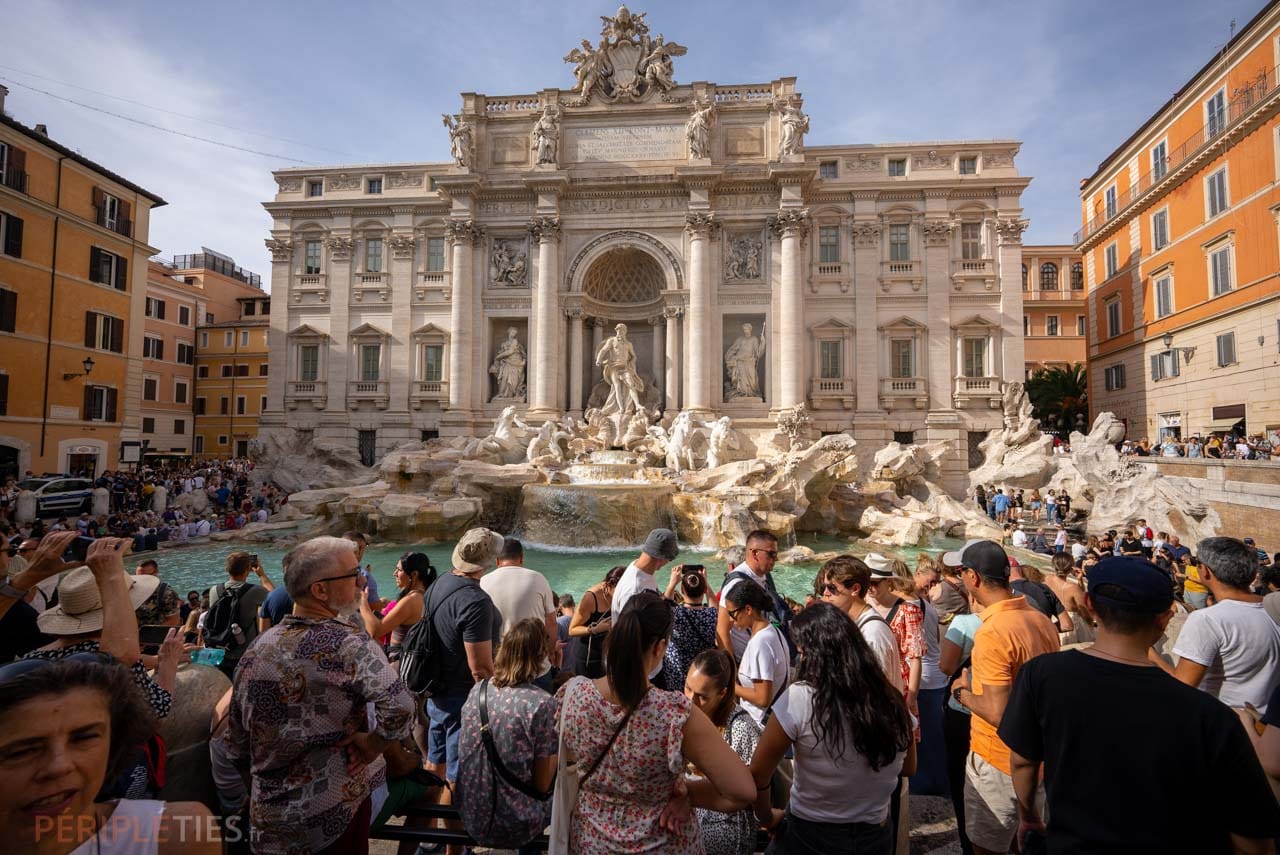
Visiting Rome by Motorhome
Visiting Rome in a camper van can be a challenge. It is possible to park outside the city, around thirty kilometres away, in secure car parks monitored by cameras, and then take the train to the city centre.
Another option is to look for hosts in the Agricamper network for a stay as close to the city as possible!
3) The wonders of Calabria and Sicily
If you have the opportunity to visit Sicily by motorhome, take the opportunity to discover Calabria, with its high plateau of Sila and its coastline offering breathtaking scenery.
4) Naples and the Amalfi Coast
The Amalfi Coast offers spectacular coastal scenery, clifftop villages, delicious cuisine and a rich history. On the way up to Naples, you can stop off at Salerno, Ravello, Amalfi, Positano and Sorrento.
However, bear in mind that the Amalfi Coast is very popular with travellers, and you'll have to rely mainly on campsites to enjoy the coastline.
How do I get to Italy by motorhome?
To get to Italy, you'll usually have to cross the Alps via pass roads or tunnels. The routes to Italy by motorhome vary depending on your point of departure in Europe and your destination in Italy.
Here are the main options from France or Switzerland. Please note that prices are subject to change, so check the websites for the latest updates. Return fares are often cheaper.
The Mont Blanc Tunnel
The Mont Blanc Tunnel links Chamonix-Mont-Blanc in France to Courmayeur by Italy over a distance of 11.6 kilometres. Prices for motorhomes: €69.10 (Class 2); €186.90 (Class 3). Mont Blanc Tunnel website
Fréjus Tunnel
A 13.7-kilometre link between Modane in France and Bardonecchia by Italy. Fares: €68.10 (Class 2) / €186 (Class 3). Fréjus Tunnel website
The Great St Bernard Tunnel
A 5.8-kilometre link between Martigny in Switzerland and Aosta in Italy. Fares: €48.50 (Class 2) / €84.50 (Class 3). Great St Bernard Tunnel website
The Gotthard road tunnel
The Gotthard road tunnel allows you to cross from the north to the south of Switzerland and then continue on the fast lanes by Italy. It is free to use, but it is particularly long (16.7 km).
The Col du Mont Cenis
The Col du Mont Cenis is a mountain pass between France and Italy, but may be closed in winter due to weather conditions.
The Col du Petit Saint-Bernard
The Col du Petit Saint-Bernard is another mountain pass linking Bourg-Saint-Maurice in France to Pré-Saint-Didier in Italy.
The Coastal Route on the French Riviera
If you're on the French Riviera, you can take the coastal road along the Mediterranean to Italy via the Franco-Italian border at Ventimiglia or Menton.
